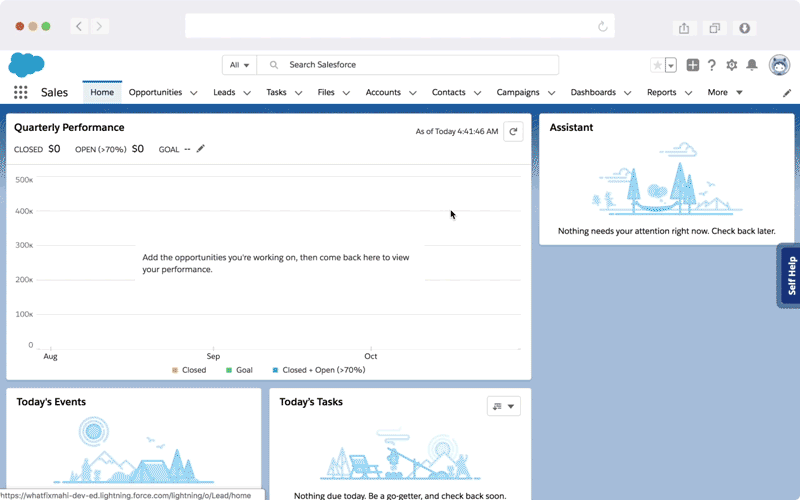10 Digital Transformation KPIs and Metrics to Track (2024)
- Published:
- Updated: February 15, 2024


Digital transformation has been an integral part of company success over the last few decades. As new technologies become mainstream for businesses and customers, companies need to adjust and adapt in order to stay relevant.
But while digital expectations are always changing, the signs that transformation initiatives are working do too. Relevant key performance indicators (KPIs) shift to adjust to market conditions and company needs — so the KPIs your team used to measure success last year might not tell you much about the state of your digital transformation journey today.
Knowing the right KPIs and metrics to keep track of is crucial for determining if your digital journey is on the right path. Let’s look at some of the most important metrics to measure and how you can determine which KPIs are right for your team and journey.
10 Most Important Digital Transformation Metrics to Track
- Return on Digital Investments
- Employee Productivity
- Adoption & Performance Metrics
- Customer Experience Metrics
- Percentage of AI-Enabled Businesses
- Reliability & Availability
- Cost-Benefit Analysis
- Revenue from Digital Technology
- Percentage of Cloud Deployments
- Active Usage Metrics
What Is Digital Transformation?
Digital transformation refers to the process of introducing new technology or processes to improve a company’s performance. This might include making the team more productive, developing the ability to offer new products or services, or creating a better experience for customers and clients.
Digital transformation encourages companies to think about how technology can improve their approach to business. It should help them find new solutions to common problems, solve customer challenges more efficiently, and empower team members to do their jobs more effectively, take on new tasks and skills, and develop themselves professionally.
How to Measure the Progress of Digital Transformation
Simply implementing change and hoping for the best likely won’t give you the results you’re after. It’s important to have a plan on how to measure your digital transformation progress before you get started. Here’s how:
- Set your goals. Before any digital transformation journey begins, you want to layout your expectations and ideal outcomes. What do you hope to accomplish through implementing this new technology or process? Knowing where you want to go will help you measure if you’re on the right track.
- Establish your important KPIs. We’ll cover what KPIs to consider in a minute, but narrowing in on a few metrics that align with the goals you’ve established can keep you focused on achieving them. In addition to determining which KPIs you’re going to track, provide reasoning for why you chose that metric. What story will this KPI tell?
- Implement analytics. You’ll need the right tools in place to measure KPIs and track progress. Identify what kind of data you’ll need to accurately measure KPIs and implement them. Make a plan for running and checking reports. How often will you check analytics?
How to Choose the Right Digital Transformation KPIs
Trying to measure too many KPIs can create confusion and make it feel impossible to make any progress. After all, trying to improve too many things at once can mean your team is spread so thin they’re unable to devote adequate time and attention to make move the needle at all.
It’s important to narrow in on a few different KPIs to measure your digital transformation goals. The KPIs you select should be specific to you, your team, and your goals — meaning you shouldn’t just pull a generic list off the web and assume you’re checking all the right boxes. Understanding your KPIs will help you select the right digital transformation model for your business.
But with so many options, how do you choose which are right for you?
Here are some best practices for creating and choosing the right KPIs for your digital transformation:
- Choose a KPI that can be measured easily and understood by a non-IT audience
- KPIs should address a specific, clearly defined audience
- Outline the desired business outcome or benefit for your KPI
- KPIs should consider where the team is today and what the target goal is
- Keep KPIs achievable — don’t bite off more than you can willingly take on or set your team up for failure
Analyze user adoption, map journeys and flows, build user cohorts, and identify areas of friction all in Whatfix's no-code event tracking and adoption platform.
With Whatfix’s digital adoption platform and analytics suite, analyze, build, and deliver better end-user experiences to accelerate technology adoption and enable end-users to maximize software usage. Whatfix’s no-code system enables IT teams to analyze and measure digital adoption and product usage, create in-app guidance, and provide self-help user support.
10 KPIs to Measure Digital Transformation Success
While you’ll want to eventually choose KPIs that align with your team’s goals and needs, here are ten of the most popular digital transformation metrics to measure.
1. Return on Digital Investments
Return on investment is one of the most popular KPIs for any new initiative. After all, you want to be sure you’re getting your money’s worth when purchasing new technology.
Return on digital investments tells you the relationship between money brought in and money taken out in relation to your digital transformation. This would compare how much you spent on new technology, training, new hires, and other expenses related to the new technology or processes, and the amount of revenue you’ve brought in since making the transition.
While this can be a strong indicator of success, it’s important to remember that returns can take time to appear. It’s likely that your ROI will seem small in the first few phases of transformation, but measuring long-term can give you a better idea of how successful the initiative was.
2. Employee Productivity
New technology and processes can drive employee productivity and help them get more done in less time — or they can become complicated and convoluted and actually make teams less productive. It’s important to not assume any digital transformation initiative will help make your employees more productive.
But before you can start to measure employee productivity, you need to get specific about what that means. Do you want to reduce the amount of time an employee spends performing a certain task, or do you want them to be able to complete more tasks in the same amount of time? Get clear about your productivity metrics.
Keep in mind that it can take time for employees to really adjust and get the most of your digital transformation, but keep an eye on metrics as they’re learning. If their productivity starts to plateau before reaching your final goal, they might need additional support or training. Be ready to jump in if necessary.
3. Adoption & Performance Metrics
Digital adoption and performance metrics tell you how employees or users are engaging with specific tools or platforms. Popular adoption and performance metrics include:
- Daily/Monthly active users. The number of individuals who use a product or service every day or month.
- Adoption rate. The number of active users compared to the number of total users.
- Average time spent using a product/feature. The average amount of time spent using a particular product or feature.
- Retention. The number of individuals who continue to use a product or service is usually represented as a percentage.
Adoption and performance metrics can give you an idea of how well your team is adjusting to your new product, platform, or particular features. If adoption and performance metrics are low, it could be an indication that your audience isn’t connecting with your offering and it might be time to make a change. It could also be an indication they need additional training and ultimately can help accelerate digital transformation.
✓ Thank you, the ebook will be sent to your email
4. Customer Experience Metrics
Customer experience is key to building a loyal customer base. Measuring how they’re engaging with and using your platform or product is crucial for long-term success.
Popular customer experience metrics include:
- Customer effort score (CES). The amount of effort a customer needs to put in to complete a task, usually measured by surveys.
- Customer satisfaction (CSAT). How happy a customer is with their service or a specific component of your product.
- Net promoter score (NPS). How likely your customers are to recommend your product or service to someone in their circle.
You can also use customer engagement and conversion metrics to see if your audience is connecting with your marketing materials and digital presence. These metrics might include website traffic sources, subscriptions & signups, or the number of demos scheduled.
5. Percentage of AI-Enabled Business
Artificial intelligence plays a critical role in shaping the future of sustainable business growth. As you go about your digital transformation journey, it’s important to keep an eye on how much of your business is enabled with AI.
Measuring the percentage of your business that uses AI can help you track where your journey is on your digital transformation journey. However, keep in mind that 100% of your business doesn’t need to use AI to be successful — in fact, it might not make sense at all in some areas.
6. Reliability & Availability
A reliable digital presence is crucial for building a strong brand reputation. If your online presence is constantly unavailable, you might need to make improvements to your digital transformation roadmap — especially if you’re providing a platform or software as a service.
The same is true for the equipment and software your team uses. If your internal solutions are constantly failing, it can hurt productivity and make it difficult to support your customers appropriately.
Popular reliability and availability metrics for software asset management include:
- Uptime. The time a piece of equipment or software is functioning.
- Mean time to failure (MTTF). The amount of time an asset operates before it fails.
- Mean time to resolve (MTTR). The amount of time it takes to resolve a failure.
- Mean time before failure (MTBF). The time between failures.
7. Cost-Benefit Analysis
A cost-benefit analysis is typically used before making decisions to determine which are worth the investment. With a cost-benefit analysis, you can compare the costs and rewards of different situations to determine which is most likely to pay off in the long run for your business.
Doing a cost-benefit analysis for different components of your digital transformation can help you determine what you should focus on first. For example, if a particular direction will give you a quick ROI, it might make sense to invest in that process early to reap the benefits faster.
8. Revenue from Digital Technology
If you’re introducing new digital technology, you want to know how much revenue those specific components are bringing into your business. This metric is similar to return on digital investments, but instead, it specifically looks at revenue in relation to new technologies introduced.
This KPI is often used when implementing a new digital purchasing method, such as e-commerce sales or a new online store. It could also be used for recurring or subscription payments for software or a platform.
9. Percentage of Cloud Deployments
Moving to the cloud is one of the most popular digital transformations companies are undergoing today. As we become an increasingly digital environment, we’re becoming more dependent on the cloud to securely store data while still making it easy to access no matter where we are.
Measuring cloud deployments can help you see how well your cloud data storage is working and if employees are able to access the information they need.
10. Active Usage Metrics
Active usage metrics tell you how users are engaging with your technology. Popular active usage metrics include:
- Daily active users. The number of users who log on to your platform or software every day.
- Conversion rates. The percentage of users who start and complete a certain activity or action.
- Abandon rates. The percentage of tasks or activities that are started, but not finished.
Active usage metrics let you know if there are day-to-day issues with your platform or product. If abandon rates are high, there might be an issue with your process that needs to be remedied. On the other hand, if conversion rates are high, this could be a sign that your digital transformation journey is on the right track.
How to Drive Digital Transformation Initiatives with Whatfix DAP
A digital adoption platform (DAP) like Whatfix can make your digital transformation journey easier to implement and track. In-app guides and self-service how-tos keep employees and end-users informed and updated about process changes, new features, and updated expectations. The easier digital transformation initiatives are to adopt, the more likely they are to stick.

And with Whatfix’s built-in analytics, you can quickly see how your end users are engaging with platform or software updates so you can make adequate adjustments to keep your digital transformation journey on track. With the right tools backing your digital transformation initiatives, your team can be more productive and customers will be more satisfied with their purchases.
Book a demo with our experts to discover how Whatfix can drive your transformation initiatives.
Request a demo to see how Whatfix empowers organizations to improve end-user adoption and provide on-demand customer support
Thank you for subscribing!

